Belkin Pure AV Power Console PF240 Review
Belkin Pure AV Power Console PF240
Jon Bray feeds his high-end hi-fi kit a diet of refined power and is surprised at the improvement.
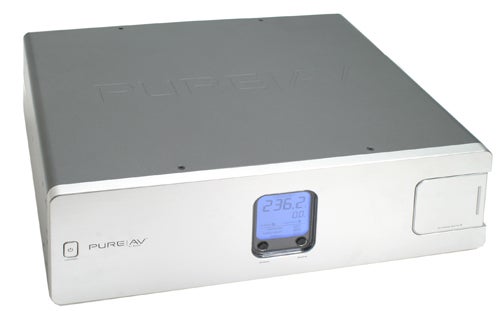
Verdict
Key Specifications
- Review Price: £216.86
Anyone who regularly reads hi-fi or AV magazines will know that there is a whole host of simple upgrades out there that don’t involve replacing expensive components or overhauling your entire system.
Spending a little money on interconnects, speaker cables, or a solidly-built rack system can pay dividends when it comes to improving sound quality and, as long as you don’t go completely bonkers with boutique cables, it can be done for a quite reasonable outlay.

Also among the improvements you can make is to look at improving the quality of the power supplied to your audio visual components. All sorts of products are available on this front, from ‘audio grade’ kettle leads to power conditioners that use filtering technology to actively reduce the ‘noise’ and radio frequency interference (RFI) commonly found in domestic electricity supplies.
Belkin’s Pure AV Power Console PF240 is of the latter persuasion, and combines active AC power conditioning with protection from power spikes or surges. The idea is that you plug the Pure AV into the wall socket, and then plug your various AV components into the nine plug sockets provided on its rear panel.
In return, the Pure AV ‘cleans’ your power supply, reduces interference on the line, and isolates and protects each component from voltage surges. There are even coaxial sockets for your satellite dish, cable TV connection and aerial plus phone line and Ethernet network sockets, the idea being that if, in the unlikely event that lightning strikes your house, those expensive AV components should be safe and protected.
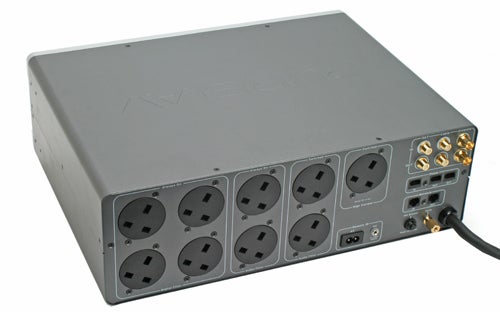
For all of this, you pay the princely sum of £217 – but at least it looks like it’s worthy of such a hefty investment. It’s all housed in a big, beefy box about the same size as your average home theatre receiver (153mm high), so you’ll need to have quite a bit of spare space on your rack to fit it in. The front of the unit is adorned with a small LCD screen with an attractive blue backlight. This informs you exactly how many volts the electricity supply is running at, how many amps your equipment is drawing and whether or not your electricity supply is earthed correctly or not.
On the far left of the front panel there’s an on/off switch for the components that are connected to the switched circuits (there are three sockets that can be turned on or off – the rest are always on). And on the right, under a removable panel, is a 10th mains output socket, for connecting occasional components such as games consoles digital cameras and so on.
One nice touch here is that one of the switched circuits has an eight second delay built into it so you can avoid those nasty thumps that so often accompany the switching on of audio equipment.
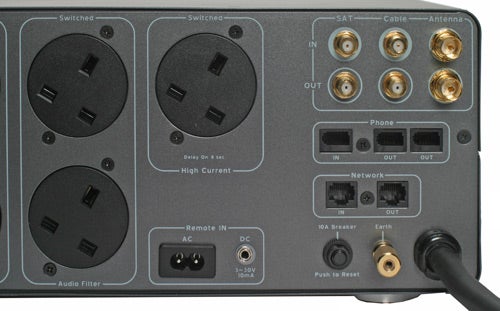
Under the hood, it’s a little disconcerting to discover how little space the electronics actually take up. The size of the box, it would seem, is solely to accommodate all of those plug sockets. At least all of the cabling, as you might expect in a product that is designed to reduced electrical noise, is neat, tidy and well-organised.
The million dollar question, of course, is whether all of this makes a discernible difference to your viewing and listening experience, apart from the peace of mind offered by those protection circuits. The short answer to that question is yes, at least when it comes to listening to music. After connecting my Unison Research Unico CD player and Primare A30.1 stereo amplifier to the appropriate sockets on the Pure AV I noticed a big difference in the sound. This was characterised in a reduction of harshness at the top end of the sound spectrum, richer, smoother and more lush midtones, and extended bass at the bottom end.
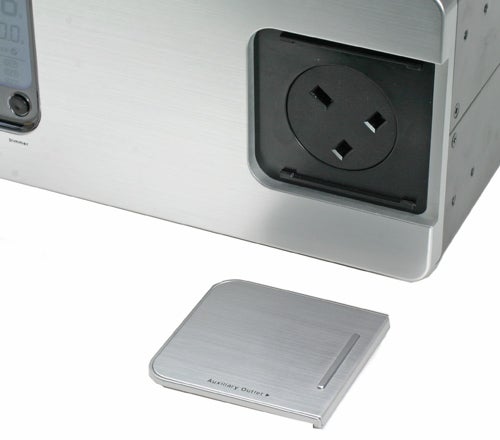
These are not small differences – the whole sonic character of my system changed in an instant. Stacey Kent’s gorgeous jazz singing voice took on a different dimension, Ramon Ruiz’s Flamenco guitar projected into the room more and the piano on Regina Spektor’s Sampson rang through that little bit more cleanly.
However, switching backwards and forwards between ‘clean’ and ‘dirty’ power I had difficulty in deciding which I actually preferred, as the ‘unclean’ power gave the sound the impression of slightly more detail, with Regina Spektor kooky vocals taking on more sibilance and breathiness and background details such as the rustling of clothes or the sliding of fingers on the fretboard of a Spanish guitar becoming more apparent. With this in mind, if you can persuade your retailer to lend you a unit to try out before you commit to buying it, it’s well worth it – after all, you may not like what you hear.
Don’t expect the unit to affect your home movie experience quite as dramatically, however. Watching DVDs and TV through a standard Sky Digital reception I found it hard to tell any difference whatsoever between clean and dirty power.
It may well be that if you have real problems with AC noise and interference that the unit will make a difference, but again you may want to trial one before committing to buying it.
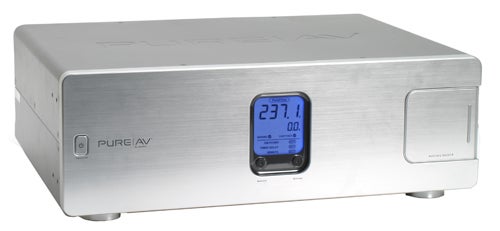
”’Verdict”’
Ultimately the decision whether or not to buy Belkin’s Pure AV will depend on how seriously you take your hi-fi. If you’re not too bothered about small differences in sound quality, are quite happy with your system as it is, and think that £217 is an awful lot of money to pay for surge protection, however good it may look, it’s probably not for you.
On the other hand if you’re the sort of person who will quite happily spend over £100 on a set of interconnects, who fiddles constantly with the position of your speakers to achieve optimum bass reproduction and constantly bemoans the state of modern recordings then it’s worth considering. It not only makes a more noticeable difference in sound quality than many more expensive upgrades, but it is cheaper than a lot of boutique hi-fi company-manufactured devices of its ilk. Just make sure you try it out before you buy.
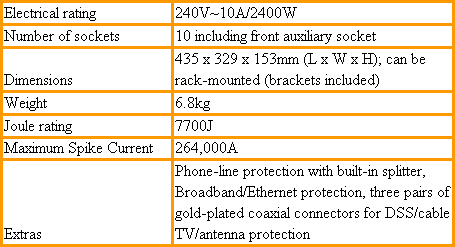
Trusted Score
Score in detail
-
Value 8

